End of Summer in the Flower Garden
End of Summer in the Flower Garden
As we go into early September, our customers have questions about their flowering plants. Whether it’s how to make their perennial garden look better through the fall, or whether they should cut off browned Hydrangea flowers, we’re ready to help Cape Cod gardens look good through October and beyond. Here are some of the questions people are asking our staff.
1. Should I deadhead my Echinacea as the flowers go by?
If the look of the drying cones annoy you after the petals disappear, by all means clip those spent flowers off. But if you leave them you’ll make the gold finches and other birds happy, since they love to eat the seeds. Usually these cones are fairly attractive as well.
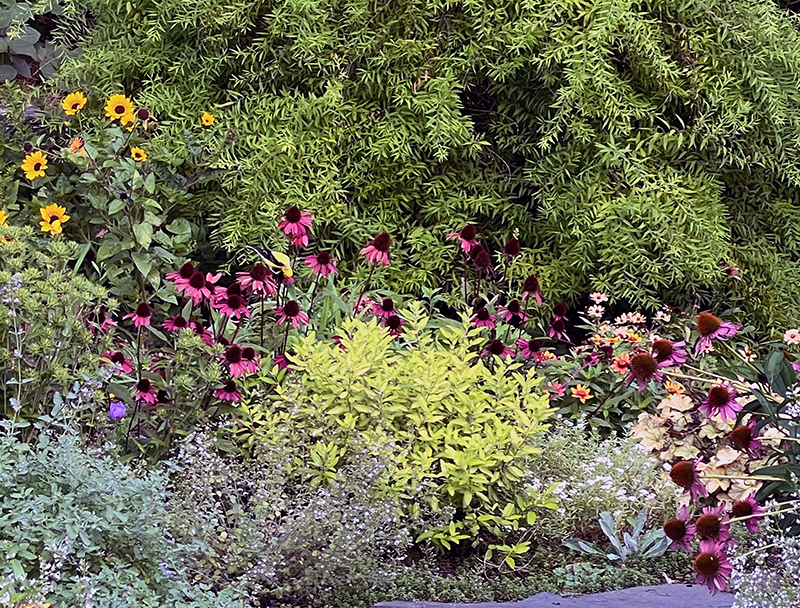
2. Some of the annuals along my front walkway have finished blooming. How can I make this area look good again?
Once annuals are no longer attractive, it’s time to thank them for their service and pull them up. This doesn’t mean that you have to live with a bare border all fall, however. There are many fall annuals that can be placed along your walkway, and the longest lasting are the ornamental cabbages and kales. These will stay attractive until Thanksgiving or beyond, and their vibrant white, pink or purple colors become more vivid as the temperatures drop.
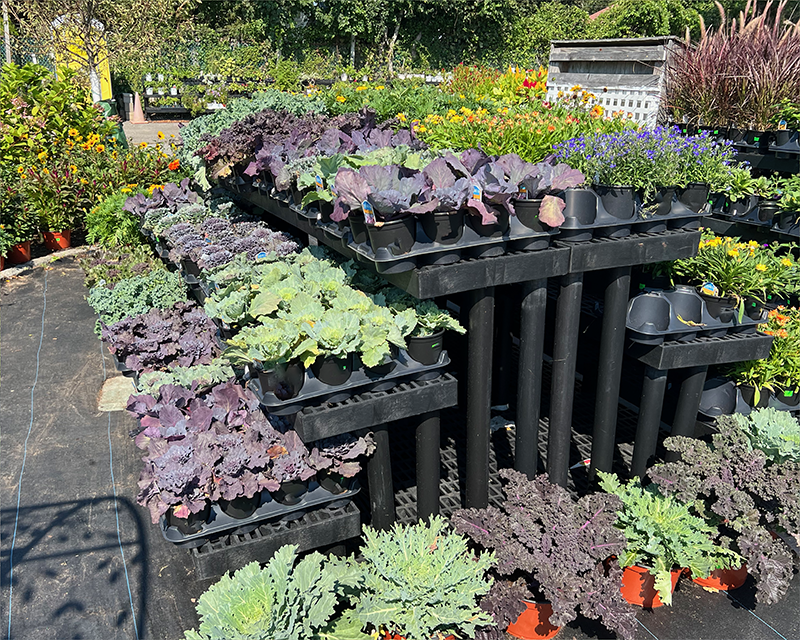
3. My Rose of Sharon bloomed for awhile but now the buds aren’t opening. What’s going on with this shrub?
Your Rose of Sharon has finished its bloom time and what you are thinking are un-opened buds are really seed pods. Many people like to cut these off in early September so that the seeds don’t germinate and make hundreds of RoS babies that need to be pulled. You can prune Rose of Sharon and get rid of the seed pods at the same time – just cut those stems back by 12 to 18 inches, and dispose of them. Make sure to cut some stems lower around the outside, moving higher as you go toward the center, in order to keep a full, natural shape on this shrub. Giving it a “flat top” by shearing it straight off the top isn’t a great look for this plant.
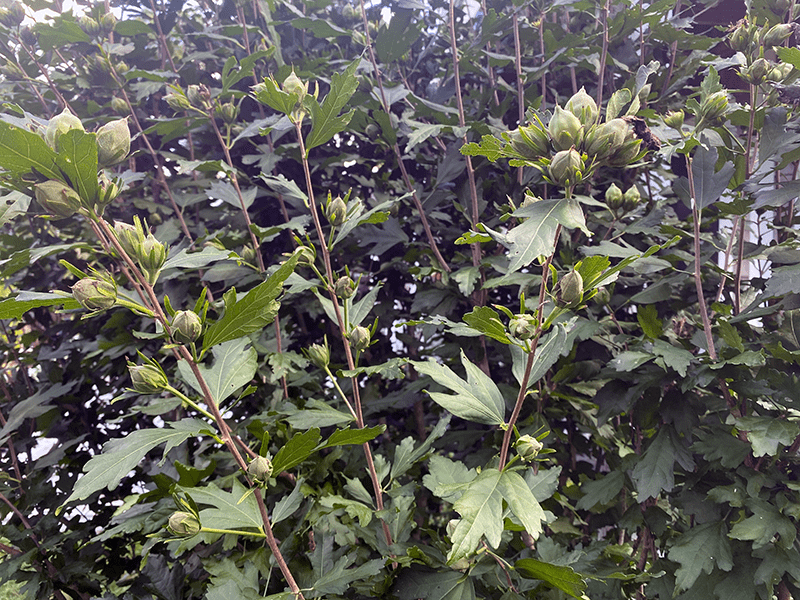
4. My perennial garden has nothing blooming right now. What can I add to this bed that will provide flowers in the late-summer or fall?
There are many great plants that will add fall flower power to your gardens. Consider the following: Perennials including Hardy Hibiscus (dinner plate size flowers in August into September); goldenrod (Solidago species and varieties with yellow flowers that support pollinators); Russian sage (Perovskia – lavender blue flowers from July into October); perennial mums such as Sheffield Pink (Dendranthema varieties, with daisy-like flowers); and perennial asters such as the ‘Woods Blue’ and other colors in that series.
Shrubs that add flowers to your gardens right now include the panicle Hydrangeas (available in many sizes), and blue beard (Caryopteris blue flowers on gray-green foliage).
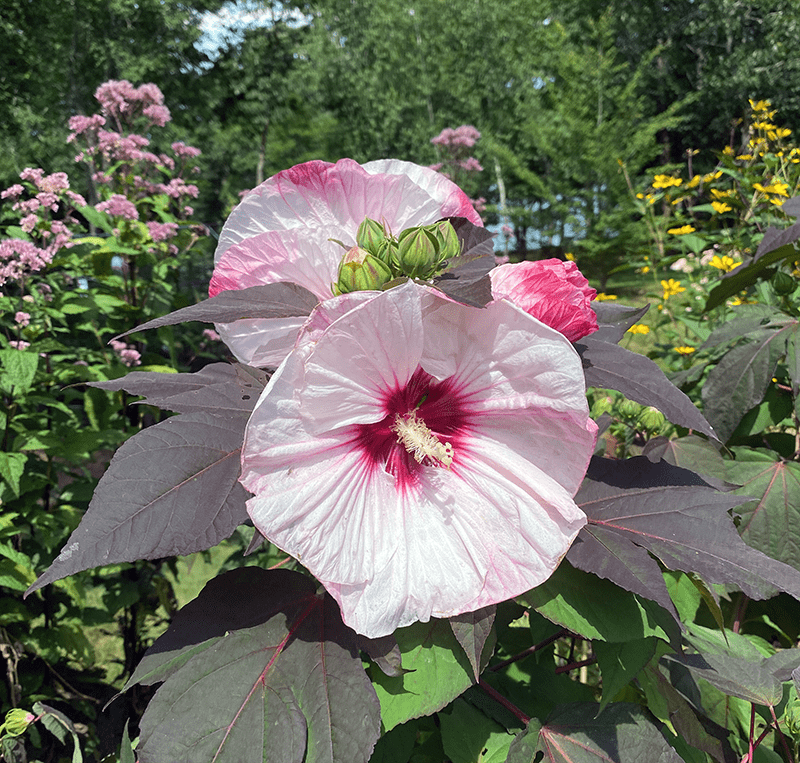
5. My blue Hydrangeas look terrible. Should I them down?
Many people have hydrangeas that look sad after this very hot, dry summer. But if you cut them to the ground right now, you’ll not have any flowers next year. The percentage play is to leave those stems in your landscape through the winter, and wait to see if any of them have life next May. In mid-May, we look at your mophead and lacecap Hydrangea plants and see which stems have small green leaves opening. That’s where the flower will come from, so any cane with green leaves should be left in place. But any stems with no green leaves by the third week in May can be cut out, since those have died either in the summer’s drought or during the winter.
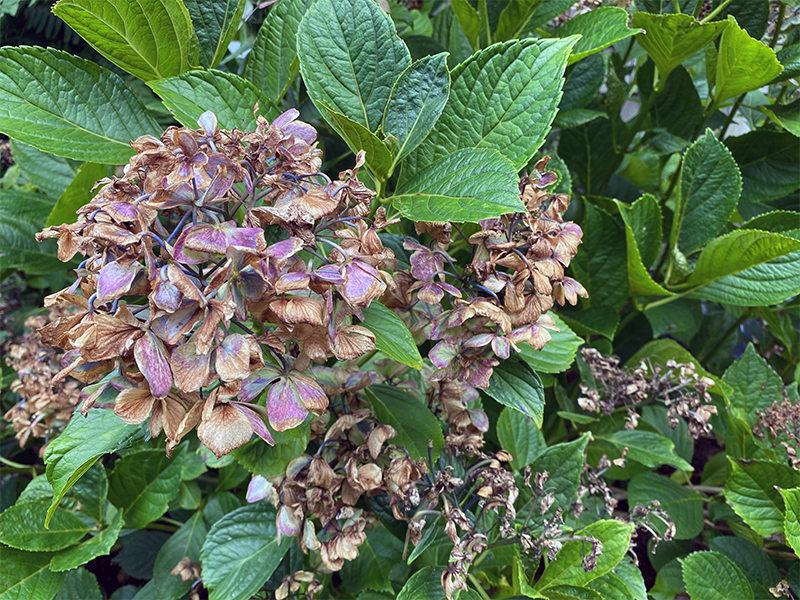
6. What should I be doing for my annuals at this time of year?
Many annuals are at their peak in September, and these can just be enjoyed. Those that don’t require deadheading should be left alone except for watering them when the soil is dry. You don’t need to fertilize annuals after the end of August. Plants that flower better when deadheaded, such as marigolds, Salvia and Zinnias should have their spent flowers clipped off. One way to keep your Zinnias and Dahlias flowering longer is to cut the flowers regularly, and making bouquets is a great way to keep them deadheaded by cutting the flowers before they go by.
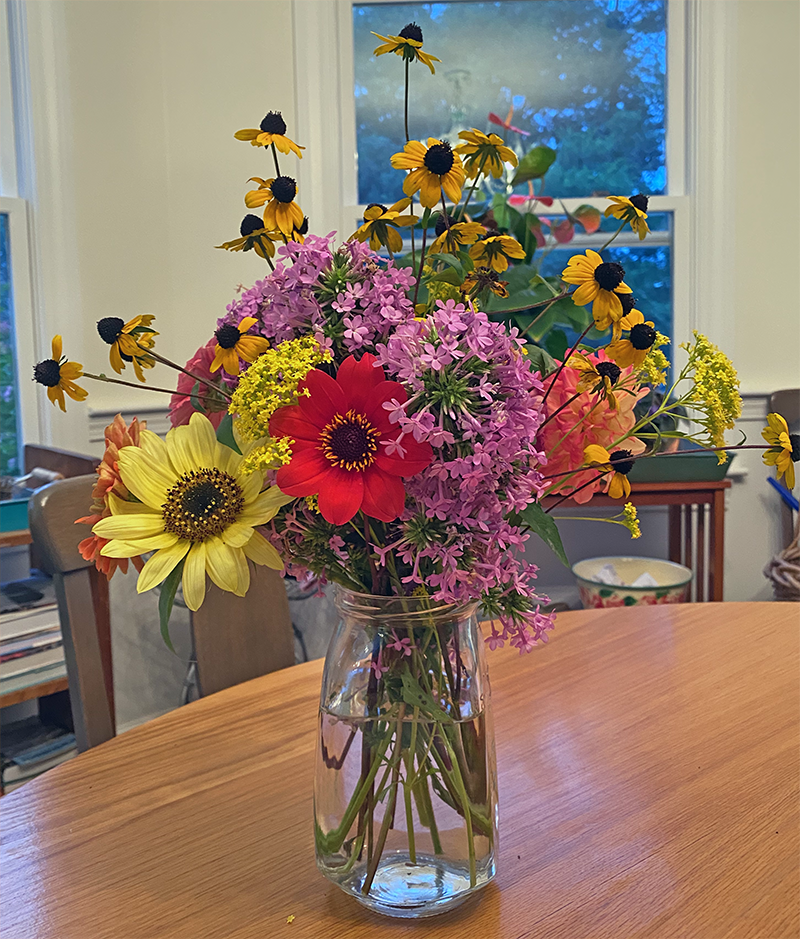
7. Can I collect seeds from my flowering plants to grow more?
Yes, you can collect seeds, especially if you’re adventurous in spirit. Some annuals and perennials are easy to grow from seed, and it’s fun to see what you’ll get when you start these. Often these plants are hybrids, which don’t produce plants or flowers that look the same as those you collected seed from. But that’s part of the enjoyment of growing from home-collected seed. Make sure that the seeds you collect are mature; the pods should not be green but should be turning tan or brown. One option is to put a small, light-weight fabric pouch or bag over the developing seeds so that if the pods open those seeds are kept inside the fabric for you to collect. You can use organza gift bags for this, or cut squares of floating-row-cover (we sell the brand called Harvest Guard) and tie them over the seedpods with a piece of twine.
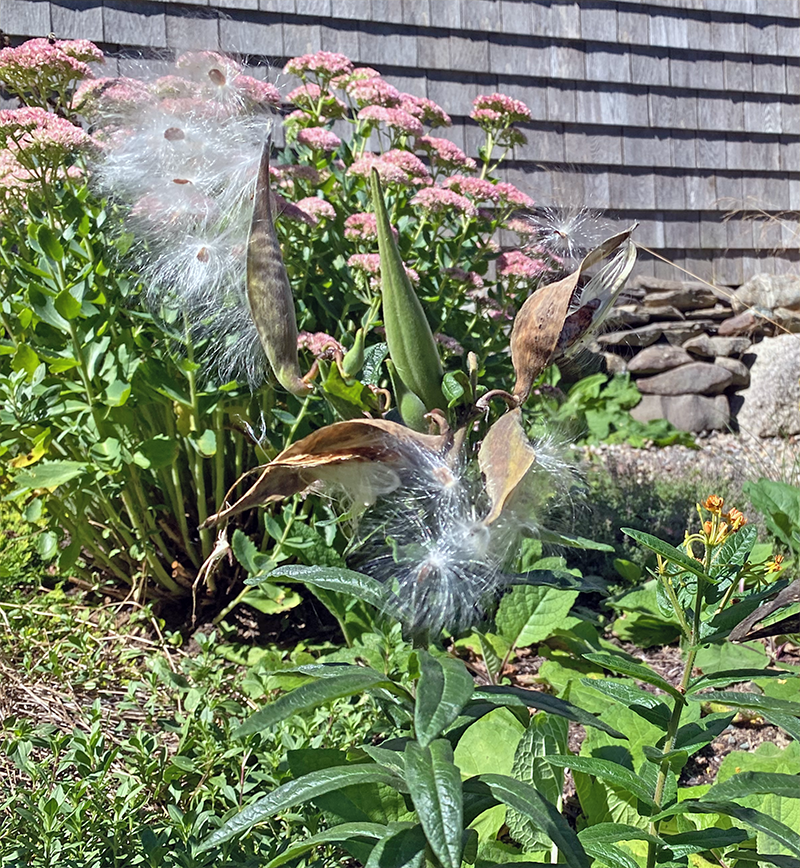
8. My perennials and shrubs suffered in the drought this year. What can I do now to help them for next year?
One of the best ways to help any plants right now is to apply an inch or two of compost over the surface of the soil, spreading it over entire perennial gardens or well beyond the drip-line of shrubs and trees. If there is still an inch or two of mulch on the soil, the compost can be put right on top of that, but if the mulch is over 2 inches thick, you might want to rake it away, apply the compost and replace the mulch.
The other thing you can do to improve your flower gardens is to pull the weeds. These plants compete for any available moisture and nutrients, so pulling them will not only make your gardens look better, but will save the resources in your soil for the plants you want to grow.
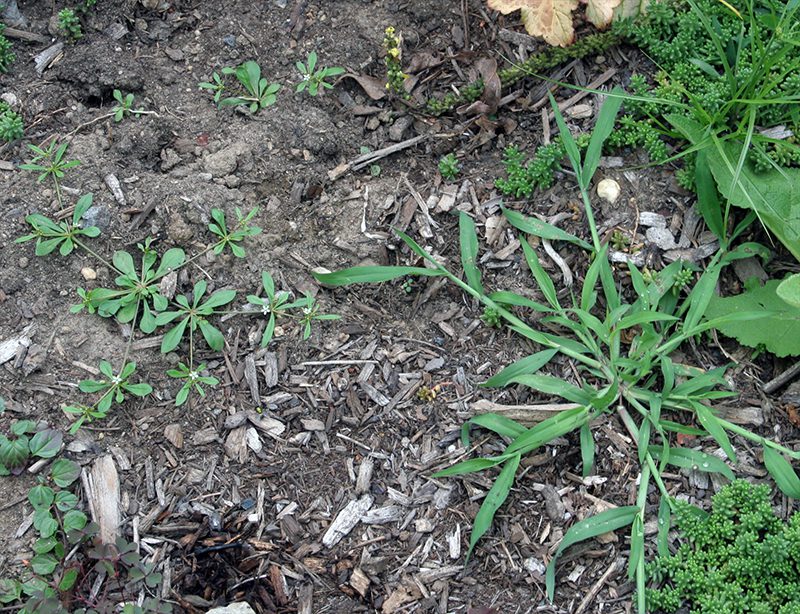
For suggestions about success with fall planting, see this UMass fact sheet.
Subscribe To Our Newsletter
Sign up for our weekly email about sales and events.
